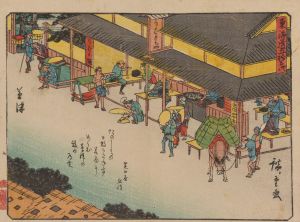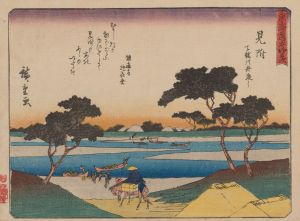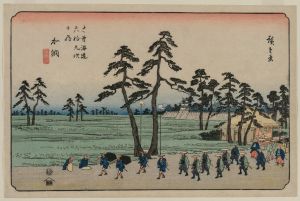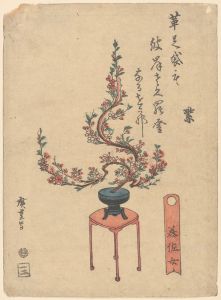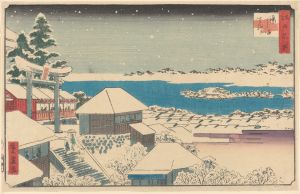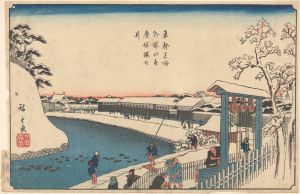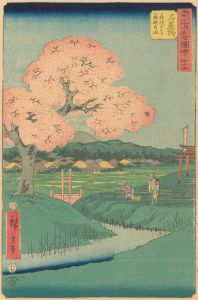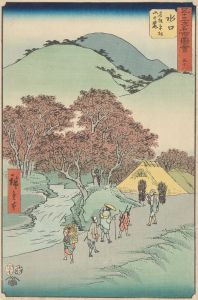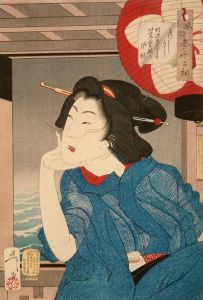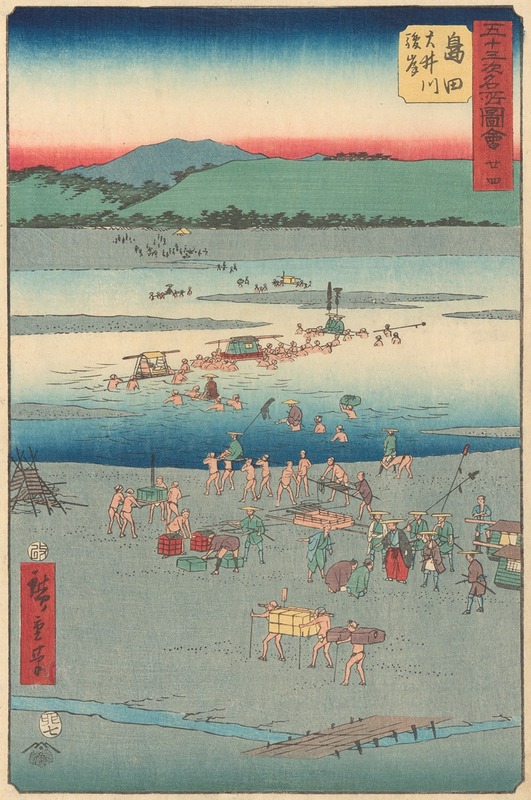
Shimada
A hand-painted replica of Andō Hiroshige’s masterpiece Shimada, meticulously crafted by professional artists to capture the true essence of the original. Each piece is created with museum-quality canvas and rare mineral pigments, carefully painted by experienced artists with delicate brushstrokes and rich, layered colors to perfectly recreate the texture of the original artwork. Unlike machine-printed reproductions, this hand-painted version brings the painting to life, infused with the artist’s emotions and skill in every stroke. Whether for personal collection or home decoration, it instantly elevates the artistic atmosphere of any space.
Andō Hiroshige, a renowned Japanese ukiyo-e artist of the Edo period, is celebrated for his landscape prints and depictions of everyday life in Japan. One of his notable works is the series "The Fifty-three Stations of the Tōkaidō," which captures the scenic beauty and cultural significance of the Tōkaidō road, a vital route connecting Edo (modern-day Tokyo) to Kyoto. Among the prints in this series is "Shimada," which represents one of the stations along this historic road.
The Tōkaidō road was a crucial artery for travel and trade during the Edo period, and Hiroshige's series, created in the early 1830s, provides a vivid portrayal of the journey along this route. Each station in the series is depicted with careful attention to the landscape, local customs, and the travelers who frequented the road. "Shimada" is one of these stations, and Hiroshige's print captures the essence of the location with his characteristic style.
Hiroshige's work is known for its use of perspective, vibrant colors, and intricate details, all of which are evident in the "Shimada" print. The composition typically includes elements such as travelers, local inhabitants, and the natural environment, all harmoniously integrated to convey a sense of movement and life. The "Shimada" station, like others in the series, would have been an important stop for travelers, offering rest and resources before continuing their journey.
The ukiyo-e style, which Hiroshige mastered, involves woodblock printing, a technique that allows for the production of multiple copies of a single artwork. This method was popular during the Edo period, making art more accessible to the general public. Hiroshige's prints, including "Shimada," were widely distributed and appreciated for their beauty and the way they captured the spirit of the time.
Hiroshige's influence extends beyond Japan, as his work significantly impacted Western artists in the 19th century, particularly the Impressionists. His approach to composition and use of color inspired artists such as Vincent van Gogh and Claude Monet, who admired the simplicity and elegance of Japanese prints.
While specific details about the "Shimada" print may be limited, its place within "The Fifty-three Stations of the Tōkaidō" series highlights its importance in Hiroshige's oeuvre. The series remains a significant cultural artifact, offering insights into the Edo period's travel, geography, and artistic practices. Hiroshige's ability to capture the transient beauty of the world around him continues to resonate with audiences today, making his work timeless and universally appreciated.
In summary, Andō Hiroshige's "Shimada" is a part of a larger series that showcases the artist's skill in depicting the landscapes and life along the Tōkaidō road. Through his masterful use of the ukiyo-e style, Hiroshige has left an indelible mark on the art world, both in Japan and internationally.





